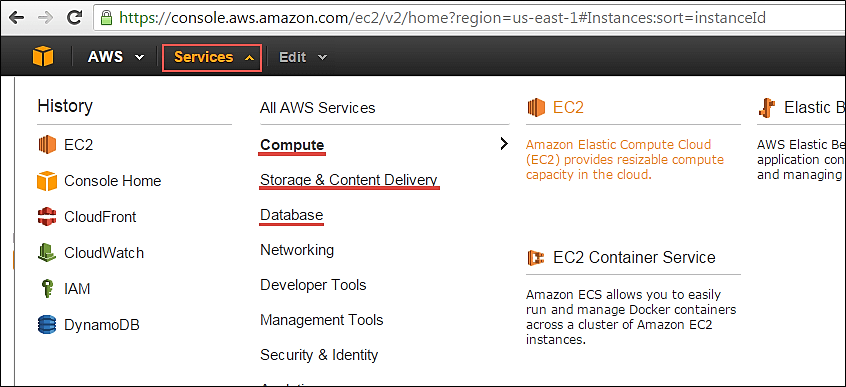Server Control Utility (SRVCTL)
To manage the RAC environment, first build a configuration profile and optionally save it. The configuration can be built by commands such as add and setenv. It is a good practice to build configuration profiles and export them to ASCII files.
SRVCTL syntax has the following components:
> srvctl verb noun options
Where:
srvctl is the SRVCTL command.
verb is an action word such as start, stop, or remove.
noun is an object upon which SRVCTL performs the action verb, such as a database or instance. Alternatively, abbreviations can be used, which in this case are db and inst respectively.
options extends the use of preceding verb-noun combinations.
To see the online command syntax and options for each SRVCTL command, enter:
> srvctl verb noun -h
Table 8.9 shows the common SRVCTL verbs.
VERB
|
DESCRIPTION
|
add
|
Add a database or instance.
|
config
|
Lists the configuration for the database or instance.
|
Getenv
|
Lists the environment variables in the SRVM configuration.
|
Modify
|
Modifies the instance configuration.
|
remove
|
Removes the database or instance.
|
Setenv
|
Sets the environment variable in the SRVM configuration.
|
Start
|
Starts the database or instance.
|
Status
|
Status of the database or instance.
|
Stop
|
Stops the database or instance.
|
Unsetenv
|
Sets the environment variable in the SRVM configuration to unspecified
|
Table 8.9: Common SRVCTL verbs
Table 8.10 shows the common srvctl nouns.
NOUN
|
ABBREVIATION
|
DESCRIPTION
|
database
|
db
|
Operation refers to objects for the database.
|
asm
|
asm
|
To add, configure, enable, start, obtain the status of, stop, disable, and remove ASM instances.
|
instance
|
Inst
|
Operation refers to objects for the instances.
|
nodeapps
|
no abbreviation
|
To add, configure, modify, manage environment variables for, start, obtain the status of, stop, and remove node applications.
|
Service
|
serv
|
To add, configure, modify, manage environment variables for, enable, start, obtain the status of, relocate, disable, stop, and remove services from your cluster database.
|
Table 8.10: Common SRVCTL nouns
Table 8.11 shows the common srvctl command options.
OPTION
|
MEANING
|
-d
|
Database name
|
-h
|
Print Usage
|
-i
|
Comma-separated list of instance names
|
-n
|
Node names or comma-separated node list
|
Table 8.11: Common SRVCTL command options
Some commonly used commands will be examined next.
srvctl add
This command adds configuration information for the database or for named instances. Command specific actions for add command:
OPTION
|
MEANING
|
-n
|
Node name that will support an instance.
|
-o
|
$ORACLE_HOME to locate lsnrctl (node option) and oracle binaries (other options)
|
-s
|
SPFILE name
|
-m
|
Database domain name, in the form ?us.domain.com?
|
For example, to add a new database:
> srvctl add database -d racdb -o /app/oracle/product/920
To add named instances to a database:
> srvctl add instance -d racdb -i rac1 -n mynode1
> srvctl add instance -d racdb -i rac2 -n mynode2
> srvctl add instance -d racdb -i rac3 -n mynode3
srvctl config
This command displays a list of configured databases. The syntax is:
srvctl config database -d database_name
For example, to display configured databases:
> srvctl config database -d RACDB
Gives the output:
mynode1 RACDB1 /app/oracle/product/dbms/920
mynode2 RACDB2 /app/oracle/product/dbms/920
srvctl getenv
This command displays values for the environment from the SRVM configuration file. The syntax is:
> srvctl getenv database -d database_name [-t name]
> srvctl getenv instance -d database_name
-i instance_name [-t name]For example, to list all environment variables for a database:
> srvctl getenv database ?d racdb
srvctl setenv
This command sets values for the environment in the SRVM configuration file. The syntax is:
> srvctl setenv database -d database_name
-t name=value [,name=value,?]
srvctl setenv instance -d database_name
[-i instance_name] -t name=value [,name=value,?]
For example, to set list all environment variables for a database:
> srvctl setenv database -d mydb -t LANG=en
srvctl start
This command starts the database, all or named instances, and all listeners associated with the database. The syntax is:
> srvctl start database -d database_name
[-o start_options] [-c connect_string]
> srvctl start instance -d database_name -i instance_name
[,insta_name-list] [-o start_options] [-c connect_string]
Command-Specific Options for srvctl start
OPTION
|
MEANING
|
-o
|
Options passed directly to startup command in SQL*Plus including PFILE.
|
-c
|
Connect string for connecting to the Oracle instance using SQL*Plus.
|
For example, to start the database and all enabled instances:
> srvctl start database -d mydb
To start specified instances:
> srvctl start instance -d racdb -i racdb1, racdb3
srvctl status
This command displays the status of the database and instance. The syntax is:
> srvctl status database -d database_name
> srvctl status instance -d database_name
-i instance_name [,instance_name-list]
For example, to get the current status of two instances:
> srvctl status instance -d RAC -i racdb1, racdb2
Gives the output:
Instance RACDB1 is running on node mynode1
Instance RACDB2 is not running on node mynode1
srvctl stop
This command stops the database and all or named instances. The syntax is:
> srvctl stop database -d database_name
[-o stop_options] [-c connect_string]
> srvctl stop instance -d database_name
-i instance_name [,instance_name_list]
[-o stop_options][-c connect_string]
For example, to stop the database all instances:
> srvctl stop database -d RACDB
To stop named instances:
> srvctl stop instance -d RACDB -i racdb1
Use the srvconfig command to export/import the SRVM configuration information. The following is an example of how to export the contents of the configuration information to the text file:
> srvconfig -exp file_name
To import the configuration information from the text file named to the configuration repository for the RAC, use the command:
> srvconfig -imp file_name

